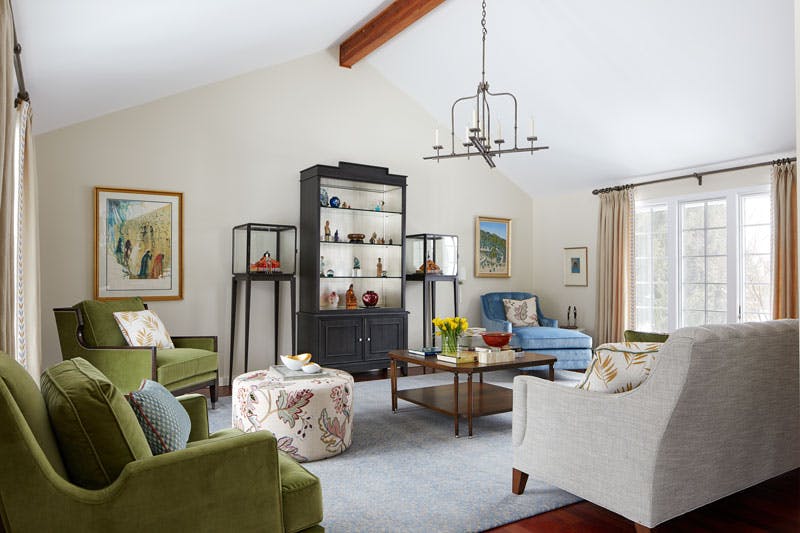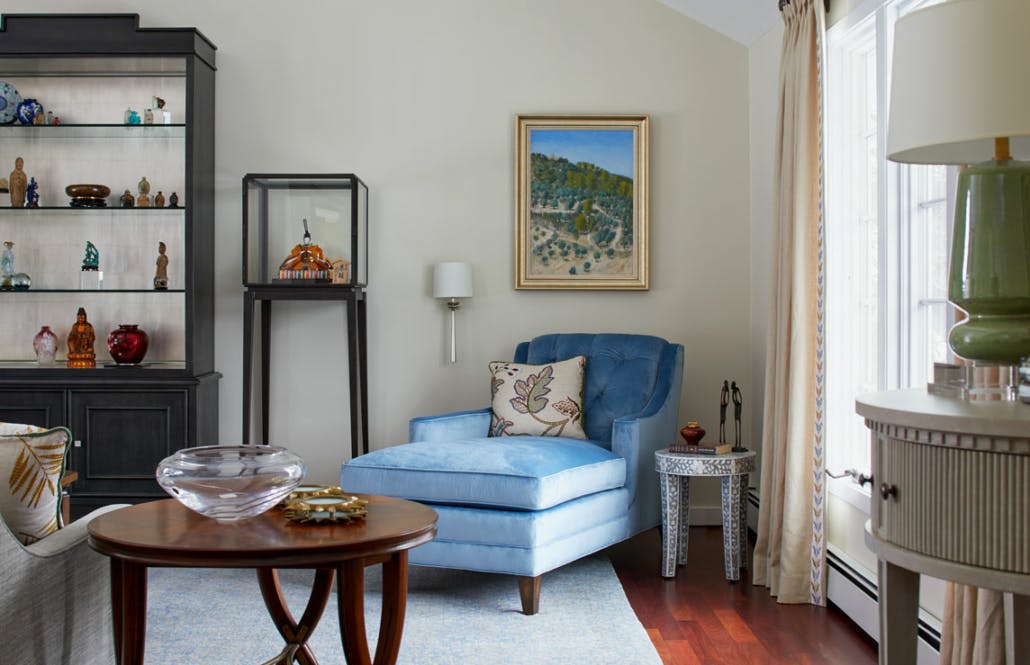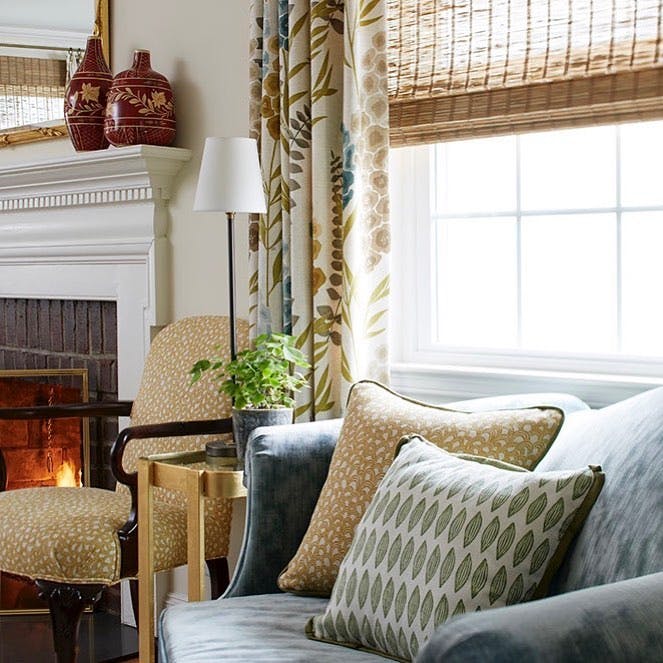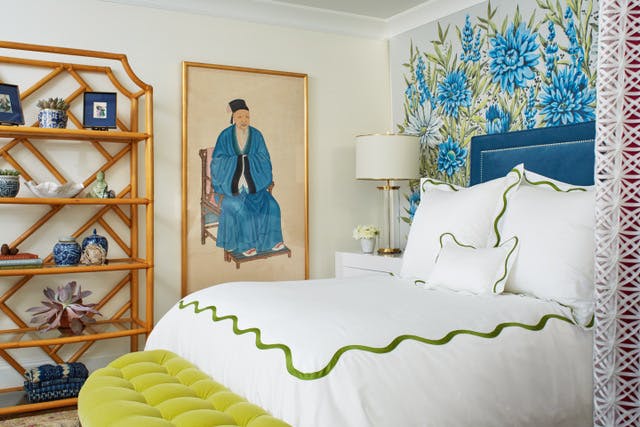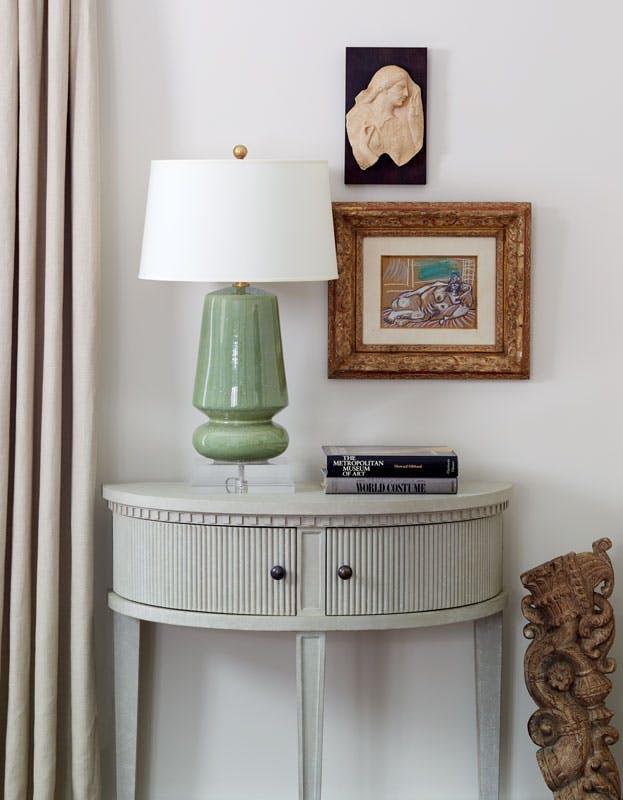
As a boutique sized interior designer firm located in Bergen County, NJ, we select and oversee the installation of countertops for projects about four times a year. Here are tips on how to maintain Quartz countertops.
For day to day use, clean up fresh spills with any brand dish soap and a soft microfiber or cotton cloth. Use a glass or surface cleaner, along with a nonabrasive sponge, to remove stains.
ROUTINE CLEANING
Though quartz will resist permanent staining when exposed to liquids like wine, vinegar, tea, lemon juice, and soda, or fruits and vegetables, it’s important to wipe up spills immediately—before they have a chance to dry.
For dried spills or heavy stains, your best bet is a glass or surface cleaner, a nonabrasive sponge (sponges designed for nonstick pans), and a little elbow grease. Keep a plastic putty knife handy to gently scrape off gum, food, nail polish, paint, or other messes that harden as they dry. Should you find yourself confronting a particularly sticky situation, your stain-busting might require a couple of extra tools.
Removing cooking grease
For left over messes, use a degreasing product, such as Easy-Off. Kitchen degreasers loosen and remove the grease from the quartz countertop surface.
Removing permanent markers
Should you find an ink or permanent marker stain, moisten a cloth with Goo Gone or a comparable product, and rub it into the stain. Rinse thoroughly with warm water to remove any cleanser residue.
DEEP CLEANING
Daily wiping and attention to spills and messes will satisfy your countertop’s basic daily maintenance requirements. But experts also recommend an overall deeper general cleaning at regular intervals. For best results, spray a generous amount of a nonabrasive surface cleaner over your countertop and let it sit for 10 minutes. Wipe away with a non-scratch sponge.
WHAT NOT TO DO
- Abrasives and Acid or Alkaline Cleaners. For starters, never use abrasive cleansers and avoid scouring pads (like Brillo pads), which can dull the surface. Soapy water will usually do the trick. If you need a gentle cleanser with a little more oomph to remove surface stains, make sure it is specifically designed for use on quartz. Beware, too, of harsh cleaning solutions at both ends of the pH spectrum. Culprits include products from nail polish remover and turpentine to drain cleaner and dishwasher rinsing agents. Whether highly acidic or highly alkaline, those chemicals can disintegrate the bonds between quartz and resin. Quartz will tolerate casual exposure to milder alkaline solutions, such as diluted bleach, but high-pH substances, such as oven cleaners and concentrated bleach, will damage the surface. If any of the substances mentioned above come into contact with your quartz countertop, rinse the exposed surface immediately and thoroughly with water.
- Extreme Heat. Trivets and hot pads are your quartz countertop’s best friends. Though the material is heat- and scorch-resistant, the resin used in manufacturing quartz countertops is a plastic and therefore prone to melting in heat above 300 degrees Fahrenheit. A sudden change in temperature or prolonged exposure to heat from a pan left on the countertop may even cause the quartz to crack. To be safe, always use a trivet or hot pad.
- Slicing or Dicing Without a Cutting Board Quartz is a hard surface, but not hard enough to withstand the effects of sharp objects like knives. Make sure to do it on a cutting board to avoid ugly scratches on your quartz countertops.
- The Elements Quartz is not the right choice for an open outdoor kitchen in direct sunlight. If you install it outdoors, you do so at your own risk, as all manufacturer warranties cover indoor use only. Day after day in direct sunlight will fade colors and lead to warping or splitting.
No Sealing required!
Unlike natural quartzite, which must be sealed on a regular basis (twice a year according to some experts) Quartz does not require any sealing. Because engineered quartz is factory-produced by combining quart with resins, and binding agents, it is nonporous, therefore making the material impervious to mold, mildew, and stain- and odor-causing bacteria.
( a portion of these instructions were borrowed from Bob Villa.com)



